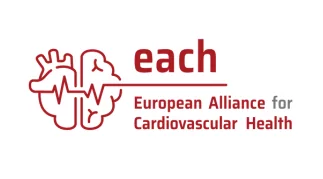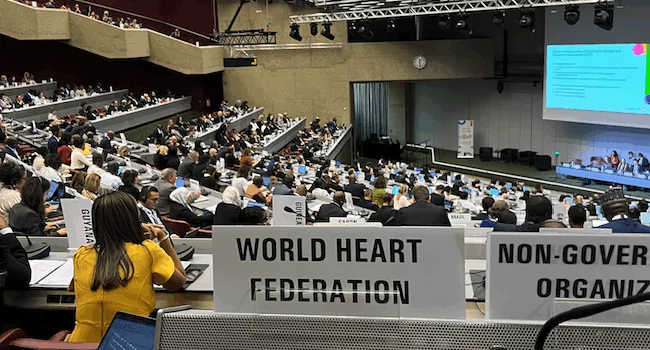Familial hypercholesterolemia (FH) is a long name for a genetic condition caused by one or more mutated genes that lead to soaring levels of low-density lipoprotein (LDL) cholesterol – the “bad cholesterol.” Damage to blood vessels from LDL cholesterol causes heart attacks early in life. FH spells trouble for the estimated 34 million people affected worldwide. Nine out of ten patients born with FH are undiagnosed, thwarting the chance for prevention of heart attacks for people as young as 20 to 50 years of age.
FH runs in families. Those with FH have a 50% chance of passing the gene onto their children. If both parents have the gene, children can also inherit both FH genes, leading to “severe or homozygous FH” (HoFH). Familial hypercholesterolemia appears more common than previously thought, affecting about 1 in 300 people worldwide, and with higher rates in many countries. As one doctor put it, it often takes a patient having had a heart disease episode, or knowing someone who has, before diagnosis and treatment are taken seriously. FH is usually diagnosed clinically with a classical lipid test that measures the amount of LDL cholesterol (LDL-C) in the blood, a physical exam, and family history. Further genetic testing can identify the gene causing FH. Since FH is inherited, other family members can be tested for the specific gene variant if found in one relative – a process known as family screening or cascade screening. Since heart attacks can be prevented by early treatment, family screening has lifesaving potential.
Early analysis, based on the survey Familial hypercholesterolemia – a country mapping report, a World Heart Federation Initiative in collaboration with FH Europe, shows that worldwide FH awareness is very low. This is true in all regions and even in developed countries where FH advocacy groups exist and relative strides are being made to improve awareness. For example, 11 countries in Africa and most of the ten participating countries in the Americas region report that no systematic national screening efforts are in place. Referrals for follow-up and treatment are also low across all regions, for example, existing in two Eastern Mediterranean countries and partially in five. With regard to treatment, the cost of statins – the primary treatment choice – is low and they are readily available yet in many regions, treatment is only partially funded. A full analysis of the survey is expected towards the end of 2021 followed by a scientific publication
Some country initiatives
WHF has identified case examples of countries responding to the urgency of FH diagnosis and treatment, offering hope. According to the Slovenian Heart Foundation, the country’s nationwide childhood screening programme, the only one in the world, has significantly increased diagnosis of FH patients from 1% to around 20% over the last 15 years. A strong network of primary care paediatricians and a health insurance system that provides almost universal coverage have been cited as key contributing factors to the programme’s success.
Turkey has been building a registry for FH to assess care gaps, gain a better understanding of FH in Turkish patients and guide national policy for its diagnosis and treatment. A trainee program is helping to ensure that primary care physicians are attuned to cardiovascular risk factors and care that include FH screening and diagnosis.
A five-point plan for FH:
FH Awareness Day is 24th September annually, a day when many regions organise activities to educate the public who are often unaware that they could have FH. The medical community and educators are also a key target audience. Key needs are ongoing education for primary care providers, clear guidance on the indications for statin regimens, free or subsidised drug provision, and elimination of duties and taxes on medicines and non-statin therapies.
Screening and testing options include universal screening via population-wide blood lipid tests with genetic testing if available or feasible. Other approaches include cascade screening of first-degree relatives of an FH-positive individual, and opportunistic testing where a history of early onset heart disease is observed or high cholesterol is identified without an obvious cause.
Referral plans, lipid clinics, and access to medication are part of a comprehensive treatment approach to FH, aided by follow-up and monitoring with a cardiologist or endocrinologist. Specialised lipid clinics can be established to offer targeted care for lipid disorders and tracking a patient’s profile of cholesterol and triglycerides, another fatty substance. Lifestyle changes entail eating foods low in saturated fat, limiting alcohol consumption, quitting smoking, and exercising regularly, in combination with appropriate medications such as statins.
Affecting all generations, FH becomes a lifelong challenge for patients and their families. A family-based care plan that engages patients in shared decision-making is more likely to offer opportunities for self-empowerment and adherence to care. Social support must complement the specific medical attention warranted by a diagnosis of FH. Such support addresses the needs along a patient’s lifespan that encompass childhood, pregnancy, adulthood, management of underlying health issues, and grief counselling.
The more we learn from each other about FH, the better equipped we will be to improve awareness. Capturing patient experience, the tenets of good care, monitoring of risks and evaluation, and latest research should be included in registries. The latter are a widely useful resource because they collect and organise health and disease data, thus helping to evaluate and guide health outcomes. Funding of national and international FH registries is urgently needed to document current practices and identify gaps between guidelines and healthcare delivery. Reliable data protection protocols to secure confidentiality in our digital age should make it feasible to safeguard registries and pave the way for patient platforms.
Familial hypercholesterolemia is a difficult diagnosis for families to grasp. With increasing knowledge and healthcare options, patients and their families must be assured to expect a better outlook and accompanying support on their health journey. Premature mortality from noncommunicable diseases is preventable and beneficial to a thriving society. Implementing a plan that addresses awareness and involves the whole medical cycle from screening to treatment and information capture will draw on the maximum expertise of many disciplines.
To learn more about the report’s preliminary data and/or contribute, please contact Programme Officer Lana.Raspail@worldheart.org
Related Links:
Improving Prevention and Control of Raised Cholesterol – A Call to Action


